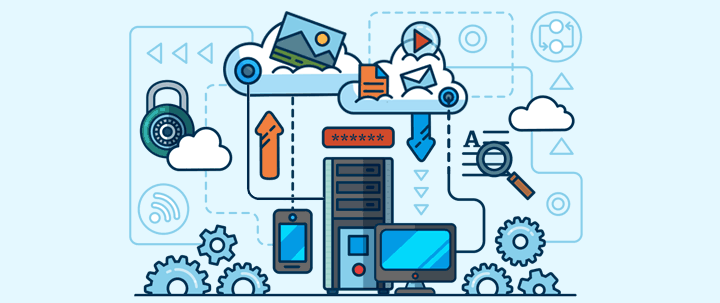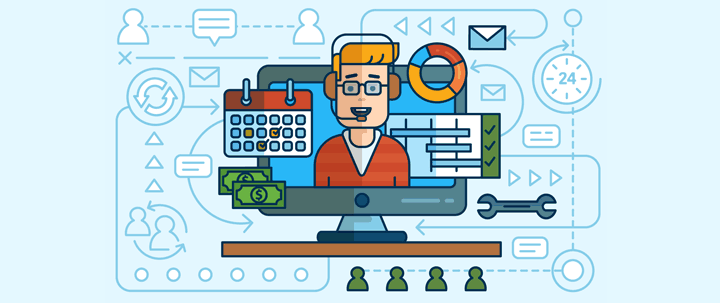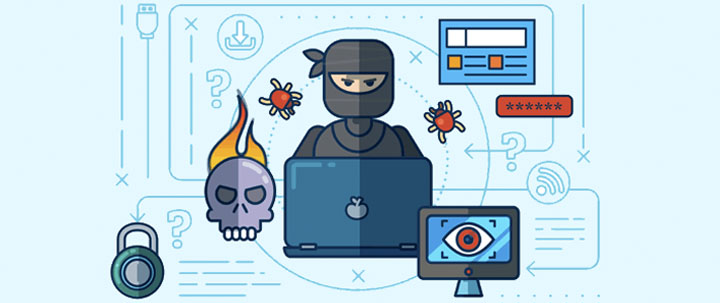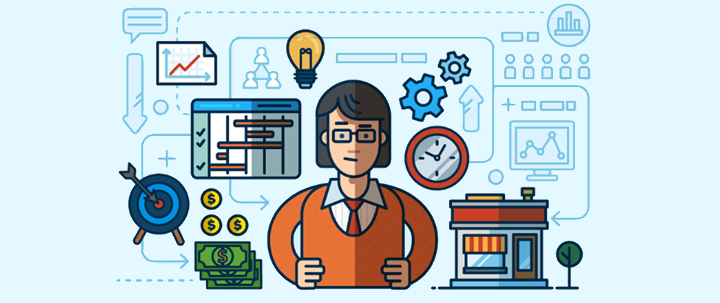There’s a longstanding argument for moving your IT helpdesk services over time to the cloud. Whether you think cloud software is a fad or the future, you’ll soon appreciate the significant benefits cloud computing offers your business.
If you’re still using on-premise software, you may have considered the benefits of transitioning towards a SaaS model. With benefits like flexibility, reduced expenditure and being able to access your data from anywhere, it seems obvious that you’d consider moving your ITSM operations over.
However, you first need to get buy-in from your decision makers and second, you also need to consider the legal or operational ramifications of doing so.
But before you move over to a cloud-based system, it’s important to consider your business requirements and whether it’s the right decision for your business. In this blog post, we’re going to look at the differences between a cloud-based SaaS and an on-premise solution.
Are You Ready?
Is It Time For Your Business To Go Cloud-Based?
One of the main reasons businesses consider transitioning in the first place is to help their IT department integrate better with the rest of the business. This is especially true for larger companies where without automation, many service management teams couldn’t cope with the massive amount of data they have to handle.

So, if you’re starting to think (or have thought for a while) that your current systems are outdated and aren’t offering you the level of flexibility your organization needs, it might be time to move to a cloud-based ITSM system. The reason so many are fond of cloud-based systems is because it stops departments becoming limited by the software they use and instead, use software to enable them to do their jobs by focusing on business outcomes and objectives.
When you allow the cloud to handle the burden of managing your own IT infrastructure it frees up your time to focus on building value for your business. This enables you to operate a much more resource-efficient, and streamlined organization.
Although we’ve presented some benefits of moving your ITSM operations over to the cloud, some companies may encounter push-back from decision makers. Why? Because there’s a long-standing argument of ‘we’ve always done it this way, why should we change?’
The thing is that there are significant cultural issues within some organizations that resist the move to the cloud. Many organizations prefer to purchase technology outright and are hesitant to switch over to a cloud-based system.
How Much Does it Cost to Move Over to the Cloud?
We’ve already mentioned that there are many cost benefits when moving to the cloud, but that doesn’t mean there aren’t any initial costs to keep in mind.
Before you begin to look at the cost of switching, try to work out how much you currently spend as well as how much value your current setup is bringing to your company.
One issue with setting up on-premise applications is the upfront capital expenditure. That’s why SaaS can be a viable option. It doesn't require a significant upfront expenditure. This is often an easier sell than on-premise solutions for organizations where budgets are tight.
SaaS vs On-Premise
Considering the differences between on-premise software and a SaaS solution is probably the best step to knowing whether or not it makes business sense for your organization to move over.
When it comes to total cost of ownership (not just the basic software cost), on-premise works out to be a lot more expensive. You see, with on-premise software, there are often costs you just can’t predict like maintenance, upgrades, and consulting.
Compare that to the SaaS model, and your costs turn out to be much less. Because your monthly subscription cost usually includes a lot of services that you had to do yourself previously, this frees money to funnel into other IT areas.
But who owns the software? Well, if you’re using the SaaS model you don’t actually own the software. Think of it as leasing a car - you just rent it for the time you use it. When you have on-premise applications, however, you actually own all instances of it. The only investment you need to make when it comes to a cloud-based ITSM is operating expense. Once you sign up, you usually pay your first month (or year) up front, and you can generally start using the cloud software right away. However, with an on-premise solution there is usually a large initial capital expense investment plus the ongoing cost.
If managing and building infrastructure is an issue for your organization, then a SaaS model works great as the only asset you need is enough bandwidth to run the software plus browser-capable devices. Compare that to an on-premise application where you need your own data center servers, application servers, computer devices plus various databases to house your data.
The way SaaS solutions are designed means there is little to no initial implementation needs. You only need to configure the system to your business preferences, and you’re ready to go.
On-premise solutions need a great deal more implementation work. You’ll have to consider software rollouts, testing, as well as implementing any technical infrastructure needs.
Whether you’re paying per user, or per month, adding and removing users can be done with ease with a SaaS solution. They are also much easier to scale up compared to on-premise solutions where you need to use vendor account management tools to scale your software use. As you need to manage your own security with an on-premise solution, you could argue that they’re safer and more secure than SaaS solutions. However, SaaS software providers understand that security is an issue for many of their customers and so most providers do put in necessary measures to make sure the software is secure. One clear benefit of using a SaaS solution is that you don’t need to ensure the security yourself.
Finally, what happens when you outgrow your platform or application or feel that another solution would offer you better business value? Well, with a pay-as-you-go SaaS solution you can generally leave at any time. If you pay monthly, you can usually leave at the end of the billable month. However, with an on-premise solution, changing vendors is often a much more laborious (and time-consuming task). Their general strategy is to have you as a customer for years and years so they make it difficult (and expensive) to leave.
Identifying Requirements for a Flexible Service Model
It’s time to start looking at some of the issues you might encounter that could stop you from moving forward with the transition.
First, consider the type of data you’ll be moving from an on-premise application to a SaaS solution. You’ll have data about your customers, your contracts, suppliers, assets, processes plus potentially much more. What that means is you’re transferring a large amount of data over. Not just any data, but usually highly sensitive data.
It’s always important to stay compliant, so be sure to check you’re actually allowed to move your data to an external server. You may experience pushback here, especially from your human resources department who might not want sensitive data to be transferred.
It’s not just HR you might aggravate with your wild ideas of moving all your data to the cloud: you need to check for legal ramifications too. With new regulations (GDPR) you need to be extra careful how you handle, store and manage personal data. So, before you jump to an external server, be sure to check the rules and regulations. Even when you’ve checked the rules, it’s still important to put necessary measures in place to make sure you’re not only compliant but secure too.
Think about what the fallout would be if your data were to be stolen in some way? These are issues you need to consider whether you move to the cloud or not.
Takeaway
There are many great benefits for moving your ITSM operations over to the cloud. In this article, we have considered why forward-thinking IT departments are moving their systems over to the cloud.
We’ve also considered the reasons why you might choose not to transition.
Are you ready to move your ITSM systems over to the cloud?




%201.png?width=559&height=559&name=close-up-women-working-with-devices%20(1)%201.png)







